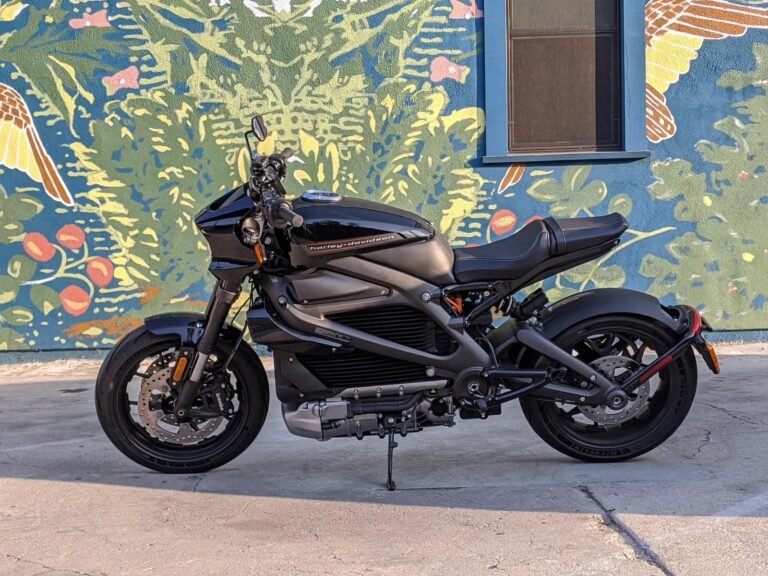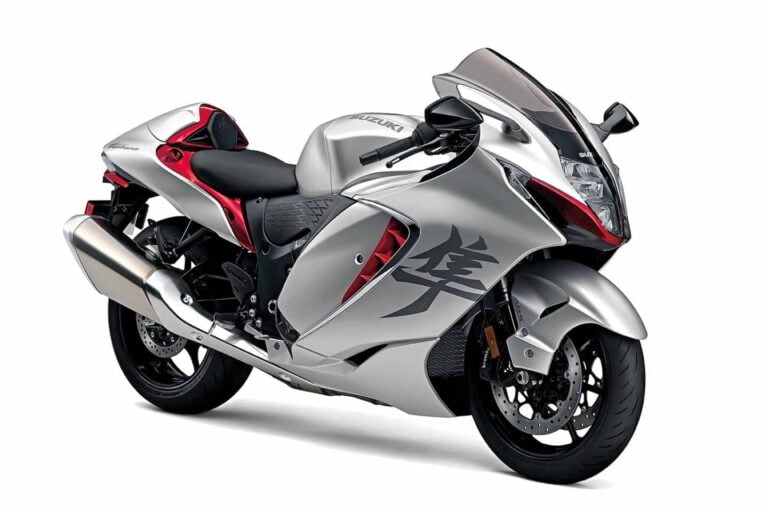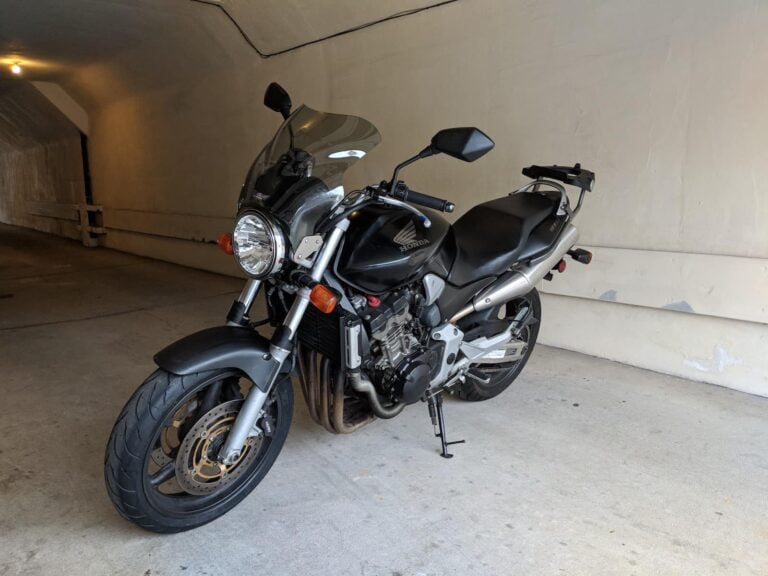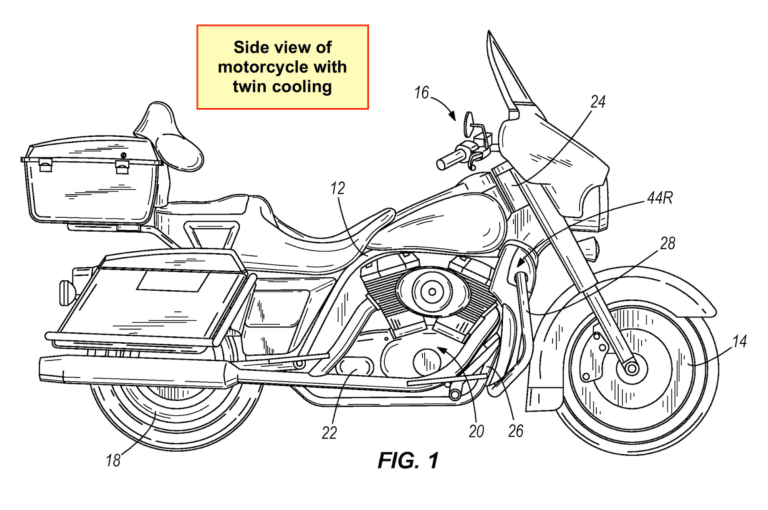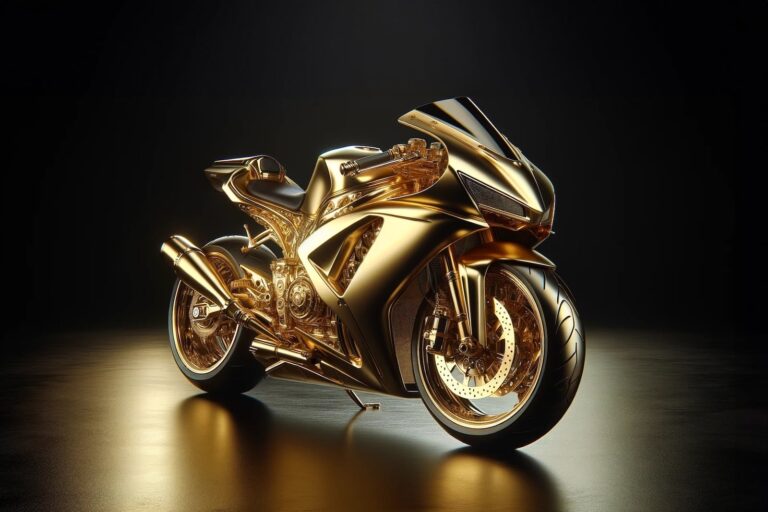Go on any forum and ask what coolant to use for your motorcycle (I dare you!) and someone in the crowd will almost definitely lead you massively astray.
People will recommend coolants that won’t cool your engine properly, may cause corrosion, and may just lead to engine failures.
Among the sporadic guidance I’ve seen touted on many forums have been advice to use:
- Water only (usually demineralised, but sometimes — though rarely — tap water)
- Propylene glycol-based coolants, the most common of which is “Evans Waterless Coolant”. (Oh, I know I’ll get flak for this… but I do know it has its uses, like long-term storage)
- Any old automotive coolant lying around (regardless of whether it has silicates, phosphates etc. in it)
- “Water wetter” (which is also appropriate in some use cases)
The problem is that there is a lot of evidence that shows that these approaches can be harmful to your engine for the average user, especially when done without care.
Coolant is one of those things — like suspension or brakes — that we have to keep understanding in the advancing age of electric vehicles. Most high-performance electric vehicles have liquid cooling. Even high-end industrial computers do.
I’m going to cover a lot of stuff in this article and try to make it comprehensive. If you have any questions, or want to make a clarification, I’d welcome it.
General disclaimer: I try to really comprehensively understand everything, and have a solid education in engineering/physics behind me to help. But thermodynamics is a massive subject studied by many specialists, and it’s their wisdom I’m trying to distill into article form with a balanced tone. If there’s something wrong or maybe just not expressed well, I always appreciate your support, and am happy to cite you if you wish.
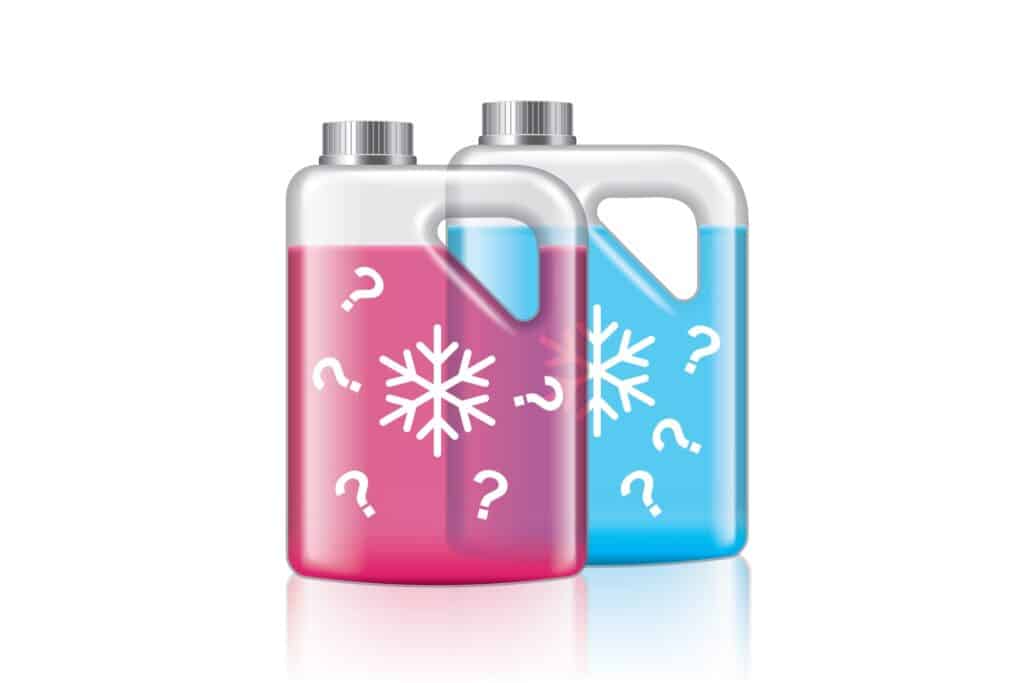
Are you obsessed with motorcycles?
Well, I am. That’s why I created this site — as an outlet. I love learning and sharing what others might find useful. If you like what you read here, and you’re a fraction as obsessed as I am, you might like to know when I’ve published more. (Check the latest for an idea of what you’ll see.)
What’s the Goal of Engine Coolant?
The goal of engine coolant is to help transfer heat from the engine to the air outside, via the radiator.
Air blows through the radiator — or is impelled through by the radiator fans. That takes heat away from the liquid flowing through the radiator.
Engines are hot because they’re not 100% efficient at converting fuel to kinetic energy — they’re closer to about 30% efficient.
No engine is 100% efficient, by the way. This is also true for electric motors — so even larger electric motorcycles (like the Livewire) are liquid-cooled. It’s the same basic reason why a light bulb gets hot (especially older, filament-style bulbs) — they’re far less than 100% efficient at converting electricity to light, and the waste radiates out as heat.
Combustion engines have always been cooled in some way. At first, they were air-cooled. That’s why we know cylinder heads of big air-cooled bikes have fins on them — to help the air get to more surface area.
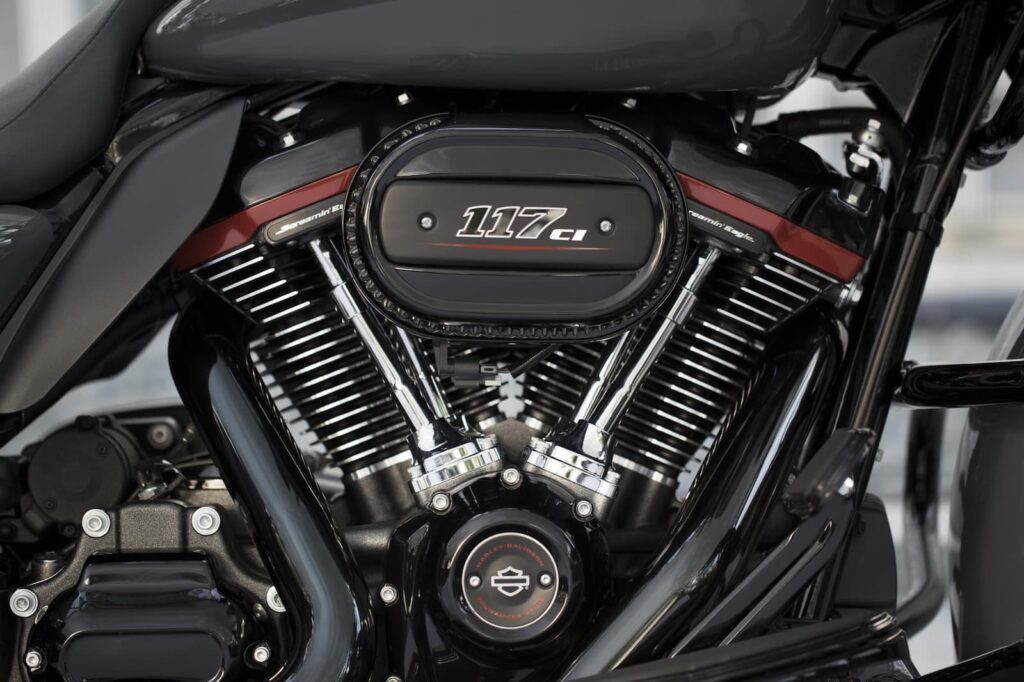
Then, bikes became air/oil-cooled, and now many are air/liquid-cooled (i.e. with a liquid other than oil).
The problem with air cooling is that air isn’t the best coolant. It’s fine when it’s cold out and the engine doesn’t get too hot. But as time has gone on, we’ve refined the way we’ve fuelled our engines, running leaner fuels and at higher compression, in an effort to both increase efficiency and power. So air cooling is only effective on small engines, bikes like the Honda Grom, or engines not intended to rev very high and produce a lot of power, like most cruiser engines.
Similarly, oil isn’t an ideal coolant, as oil doesn’t conduct or carry heat very well. Most people still think of oil cooling as air cooling, because really it’s just acknowledging that oil (which you have to have in an engine for it not to freeze up) does help to a degree with cooling, so let’s route it around the engine more to support this, and stick a radiator out the front to cool the oil.
My Ducati Monster 900 was air/oil-cooled, but people think of it as having an “air-cooled twin”. Same with my BMW R nineT.
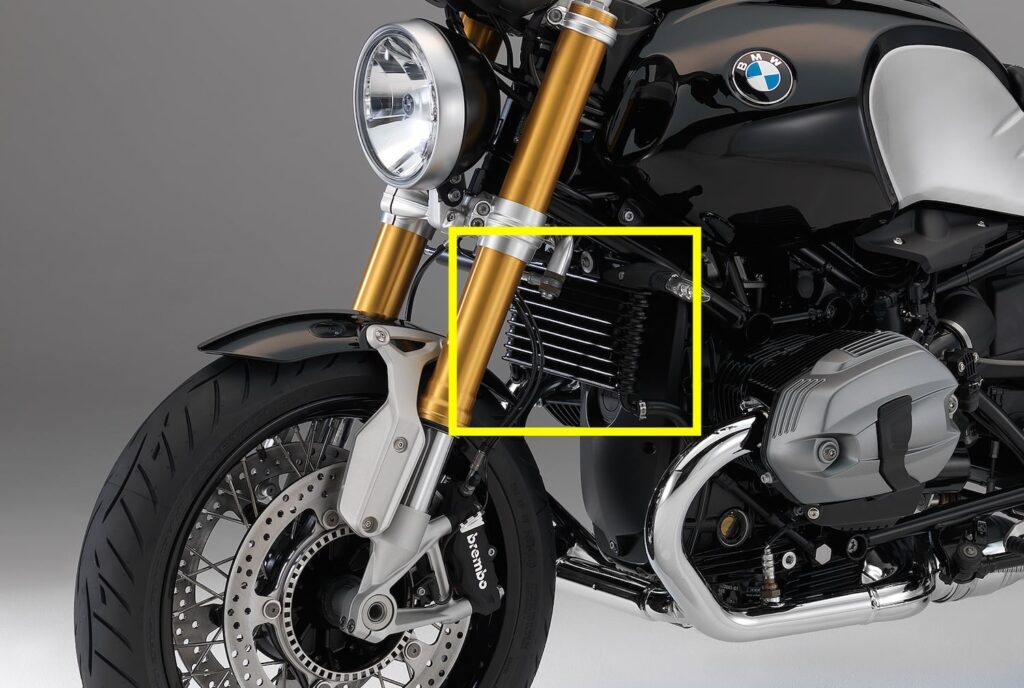
Most modern Harley-Davidsons are air/oil-cooled, with the oil radiator hidden in the front frame. You can even buy an optional oil cooler fan for many models, a useful add-on if you do a lot of low-speed riding or continuous idle time.
Air-cooled and air/oil-cooled engines overheat more easily. You generally shouldn’t leave them on for long periods. The manuals advise against this. (It’s also not a good idea for liquid-cooled motorcycles, but they can handle it better.)
The most vulnerable air/oil-cooled engines are those where airflow to part of the engine isn’t as good. In longitudinal V twins like Ducatis and Harley-Davidsons, the rear cylinder doesn’t get as much cooling airflow.
On the other hand, Moto Guzzi engines, as well as some old Hondas like the CX500 and maybe others, have horizontally-mounted V-twins with cylinder heads hanging out in the breeze, free and easy, with not a care in the world. Wouldn’t it be nice!
Liquid cooling is the answer to the problems of cooling V-twins. Liquid cooling for engines means
- They can run higher compression ratios (more power!)
- They can run leaner fuel mixes (more efficiency)
- They can be lighter sometimes (less metals used to dissipate heat)
- They’re quieter — liquid deadens the engine sound.
Generally, more motorcycles have moved towards liquid cooling because the balance of pros vs cons has shifted as people have demanded more power and more reliability from motors, at the cost of aesthetics and simplicity in design. Emissions regulations have had a role too, as liquid-cooled motors can run leaner, and are also quieter (sound is also regulated).
See more on the pros and cons of air or liquid-cooling here.
But liquid cooling adds complexity, weight, and endless debates about the “best” coolant. This article is a framework that you can use to assess what the best coolant is.
How do you measure coolant performance?
Or: What makes a good coolant?
There are three ways to assess how well a coolant performs.
- Actual performance on an engine. You measure temperature at various points — the cylinder heads, block, or others.
- Description of the coolant’s physical properties, including its conductivity and specific heat.
- The “Seat of the Pants” analysis.
Measuring coolant performance directly (at the engine)
Because the way a coolant moves around an engine is very complicated, the best way to assess how it’s doing is by measuring the actual temperature of the metals of the engine.
Ideally, I’d want to know the temperature of the metals closest to the combustion chamber, because temperature dissipates through the metal in weird ways.
But I can’t stick a thermometer there, so we settle with the temperature of the cylinder head. If you can attach a thermocouple to the cylinder head, do so. A lot of multimeters support thermocouples, so measuring cylinder head temperature may be something you can do at home.
If your console has a temperature gauge — make sure you know what it means. On most (probably all) liquid-cooled motorcycles, this is the temperature of the coolant.
Coolant does get hotter as the engine gets hotter, but it’s not the same thing. For example, one coolant may get hotter more quickly than another coolant, but that could be because it hasn’t got as much heat capacity — it may take less energy to heat it up. Or a coolant may be cooler, but that could be because it has poorer conductivity, meaning it absorbs less heat, and gives less heat out to anything measuring heat.
Basically, know what your objective is — a cooler-running engine — and measure that as directly as possible.
Measuring coolant performance — Metrics
These are all the scientific aspects to assess when considering what coolant to use, as well as the metric and imperial units used.
| Criterion | Description | Unit |
|---|---|---|
| Thermal conductivity | How easily heat is conducted to a liquid, and how easily it’s conducted out. Higher conductivity is better. | W/m.K or BTU/h/ft.R |
| Heat capacity, a.k.a. “Specific heat” | The amount of energy needed to increase the temperature of the liquid. Influences the amount of coolant that has to flow. Lower is better (look at the unit used — energy is in the numerator) — but this is often expressed as “higher heat capacity”, i.e. it takes more energy to raise the temperature. | J/kg.K or BTU/lb.R |
| Freeze point | Should be well below the freezing point of water, if you live in a cold environment. (Water is OK for many who live in warm places with year-round riding.) | Degrees C / F |
| Boil-over point | Typically somewhere over the boiling point of water. (Pressure also helps — see below) | Degrees C / F |
| Corrosion inhibition | Organic / non-organic corrosion inhibitors and water-free coolants all have different corrosion protection levels. | Type (OAT/IAT/HOAT etc.) |
| Shelf life | Coolants last 2-4 years if they rely on corrosion inhibitors, but some claim to be “permanent”. | Years |
| Toxicity | Propylene Glycol is essentially non-toxic; Ethylene glycol is very toxic | Yes / No |
The above are all the things various people consider. Depending on your personal preferences, you may put them in a different order.
Perception vs Reality — Common Pitfalls in Personal Experience of Coolant Performance
Many ordinary (non-race-engineer) people think about coolant because they think something about their vehicle is off — it “seems to be running hot”.
As a motorcyclist, I notice heat against my legs (which I welcome on cold days, mind you). Car drivers know heat as heat that blows over your legs through the heating system.
But where is that heat coming from? It’s not necessarily from the “engine”. In fact, as I’m riding, depending on the air flow of the bike, it might be air passing through the radiator, whose job is to radiate heat.
So “feeling heat” isn’t a fool-proof way of knowing the bike is hot. You have to know where it’s coming from, too, and how heat is flowing from the engine to the radiator to air.
Secondly, whatever I’m driving / riding, if my vehicle has a digital temperature display, I also notice that blasted little number on the digital display. This is usually the coolant temperature, not the cylinder head temperature. (Some vehicles may show oil temp.)
In the old days, in cars or motorcycles, vehicles had a temperature needle. It told you basically three things: too cold, too high, or “just right”. We knew that when the needle was in the middle, everything was going well.
I tend to prefer cars and motorcycles that have a needle rather than a number, even if they’re digital. Luckily, these are still being made.

In modern motorcycles with digital displays — actually even bikes from the early 2000s (and maybe earlier) — there’s often an engine temperature indicator that displays digits, though. I have had this on various Hondas since the early 2000s.
The result of these digital displays is that many people on forums say “My bike seems to be running hot. Is it OK that it’s always above 100 C / 212 F when I’m in traffic?” They’re worried the engine is boiling over, because they may know water is supposed to boil at that point. (Water doesn’t boil as early in pressurised systems — see below.)
It’s important to know what exactly that temperature is indicating. In most motorcycles, it’s thermostat temperature, and is thus the temperature of the coolant. So yes, this is related to whether your coolant may be boiling, but it’s not a direct measure of how hot your engine is running.
Overview — What is engine coolant made from?
The goal of a coolant is to help cool the engine. But because coolants are usually water based, and water has a limited operating temperature range and also leads to corrosion, they also have additives to increase the operating range and to prevent corrosion.
So engine coolants are comprised of two things:
- A heat-conductive fluid (either one liquid or a mixture) with a wide operating temperature range, and
- Corrosion inhibitors, if there’s water in the coolant (the vast majority of coolants are water-based).
That’s it! Let’s look at types of head conducting fluids in engines.
Heat conducting fluids in engine coolant
The heat-conductive fluid is the “coolant”. Its job is to take heat from one part of the motorcycle (the engine) and to conduct it out to the air via the radiator. A great engine coolant is one that absorbs as much heat as possible and does so over a wide operating range. Conversely, a poor coolant is one that does not conduct absorb and heat well.
If you want to think of heat conduction, think of your coffee or tea mug that may be next to you. It’s probably made of ceramic. When you pick it up with hot fluid in it, it’s warm but doesn’t burn you, even though the liquid insight feels much hotter.
But if you’ve ever used a camping-style enamelled metal mug you’ll notice that firstly, it’s very hot when you first fill it with liquid, and secondly, your hot drink gets cooler a lot faster. That’s because metal is a very good conductor of heat, so it transmits it easily to your hand and to the environment.
So why say that a coolant has to have a “wide operating range”? To highlight that engines often operate above the boiling point of water at baseline pressure (100 degrees C or 212 degrees F), and in environments below the freezing point of water (0 degrees C or 32 degrees F).
If you’ve ever exploded a can of coke or beer in the freezer after forgetting it was in there (er… guilty), imagine what would happen to your engine case if it was just full of water and it was freezing outside. (It wouldn’t explode, but some bits would stretch and crack.)
Similarly, your coolant has to stay liquid in as wide a range of temperatures as possible. And it has to keep being a decent conductor of heat in that temperature range.
Because water freezes and boils at its freezing and boiling point, and because engines get to those points too easily, we add in a bit of magic to make sure it is harder to freeze and harder to boil. That’s why we mix water with glycols.
Sidebar — How can coolants operate above the boiling point of water?
It’s a startling idea to imagine coolant boiling inside your engine, I know. But this doesn’t happen under normal circumstances. In fact, you’re likely to be OK even if you don’t use a glycol to extend the boiling point. That’s because glycol is a very good antifreeze, but only a slightly good anti-boil.
The main way we can control the boiling temperature of water is through pressure.
At sea level air pressure, the boiling point of water is 100 degrees C / 212 F. But if you live at high altitude, where air pressure is lower, water boils at lower temperatures.
In fact, at base camp on Mount Everest (5150 m / 16900 ft), water boils at 68 degrees C… so it would take a long time to safely sterilise an egg by boiling it, and it’d never become hard!
In a pressurised system like an engine cooling system, the cooling system is set to run at around 15 psi (about 1 atm above baseline). Beyond that, it releases pressure so the whole thing doesn’t explode (which would take a lot of pressure over a long period of time).
At 15 psi of pressure, water boils at 120 degrees C or 248 F. With a 50% blend of ethylene glycol, it boils at 129 C / 265 F. Pressure contributes more to the higher boiling temperature than the glycol.
In race applications, people build engines with higher pressure components (hoses, pumps etc.) and I’ve read of cooling systems being up to 50 psi, to increase the boiling temperature further.
Cooling System Pressure and Water Expansion
Firstly, there’s some misconception around about why cooling systems run at pressure.
Some important context is that 15 psi of pressure (typical for a liquid cooling system) is very little — if you’ve ever inflated a car or bike tire, you’d know that’s a very flat tire. Even a very worn tire wouldn’t explode just from 15 psi of pressure. The lousiest of air pumps could get your tire to 15 psi of pressure.
To understand pressure in a liquid cooling system, let’s analyse two questions.
First, where does cooling system pressure come from?
The simple answer is that water expands as it is heated. The same is true of all liquids to different degrees. (Water has some other weird properties near freezing — it expands there too — which is why we have antifreeze.) Agitation of the water by the pump also increases the energy in the water, expanding it.
The degree to which pressure increases in a cooling system depends on
- The amount of water in the system
- The amount of air
- The total volume of the system
- The pressure release mechanism (traditionally the radiator cap, or some mechanism of an expansion tank)
When the engine is cold, the temperature of a vehicle’s cooling system is the same as outside pressure. That’s why you don’t get a “pfft!” of escaping pressure when you open the cap. It’s only when the coolant heats up that the pressure increases.
Secondly, is pressure “bad”? I also sympathise with this feeling. It feels like stress. But it’s worth looking at in more detail.
But what is “pressure”? At a molecular level, pressure comes from molecules bouncing around and off each other and against the walls. The higher the energy (the temperature), the higher the pressure, which means the more space the molecules take.
A classic physics class metaphor for pressure is people at a party. If they’re all standing still, you can pack many people into the room. But the more vigorously and crazily they start dancing, the more space they’ll take. Once they reach boiling point, they spill out onto the street, or something (I think? I haven’t been to a party like that…), which is equivalent to your radiator cap hissing.
Anyway, the cooling system is designed to work at certain pressure, a function of the pump and the operating temperature. At that pressure it moves coolant around all parts of the engine and radiator effectively.
But it’s over-simplified to say that higher pressure means the pump has to work harder, and that a lower pressure is thus “better”.
One way in which lower pressure is better is that you have less stress on static parts of the system like hoses and the radiator, so they may take longer to fail. You still have to watch those parts though, as they get old just by exposure to the elements outside.
Corrosion inhibitors in engine coolant
The second important part of any car or motorcycle engine coolant is the corrosion inhibitor (assuming you’re using a water-based coolant).
Since an engine and cooling system is made of metal, exposing it to water (with oxygen in it almost inevitably) will cause it to corrode eventually. So coolants have something in them to delay that happening.
Corrosion inhibitors are additives like salts or organic compounds. They either bond to the metal surface and protect it from being exposed to oxidising agents, or they form a thin protective layer.
The reason you need to replace your coolant every 2-4 years is because the corrosion inhibitors break down over time — not because the coolant stops working. So the quality/type of corrosion inhibitor is important.
There are different kinds of corrosion inhibitors — loosely grouped into “organic” and “mineral”. Organic ones have been getting popular. More on this below.
Propylene Glycol vs Ethylene Glycol — What’s the Better Coolant?
The main anti-freeze additive used in engines (motorcycles, cars, others) is ethylene glycol with anti-corrosion additives.
You can actually use pure water as a coolant in an engine. Water does a great job of conducting heat from one place to another.
The first problem with water, as mentioned above, is that the dang thing freezes at freezing point (0 degrees C or 32 degrees F) and at boiling point (100 degrees C and 212 degrees F, and higher under pressure).
The second problem is corrosion, and we’ll look at that in the next section.
So what do we do about the freezing / boiling point problem? Mix it with a glycol. There are two glycols used in coolants — ethylene glycol, which we used in vehicles, and propylene glycol, which we use more in industrial applications.
When you mix ethylene glycol in the right proportion with water, you reduce the coolant’s freezing point and slightly raise its boiling temperature. You mostly get a much lower freezing point, with a freezing point of 40 degrees below freezing (either Fahrenheit or Celsius… it’s roughly the same down there).
Also, because it has higher viscosity, an ethylene/glycol mix has a higher boiling temperature, too.
At atmospheric pressure it’s (roughly 105-110 C or 221-230 F), but at the higher +15 psi (1 bar) pressure of a system — roughly double sea level air pressure — the boiling temperature of the cooling system is usually above 120 C (248 F), depending on a few other factors like your altitude.
If your coolant gets above 120 C / 248 F and you haven’t actively managed it, you may have an engine or cooling system problem.
FAQ 1: What’s wrong with ethylene glycol as a coolant additive?
There’s one major thing wrong with ethylene glycol — it’s toxic. Don’t drink it, even though it looks a delicious blue or green, like your favourite sports drink.
But seriously, when making food-grade industrial systems (like refrigeration in a food processing plant), it’s better to use a non-toxic coolant like propylene glycol because a small risk of a leak can result in large problems.
People often like to describe ethylene glycol as “toxic” when promoting propylene glycol. It definitely is! You shouldn’t tip it into your garden; you should dispose of it properly.
But many fluids in an engine are toxic: Engine oil, for starters, which you change much more often. Brake fluid can strip paint off most bits of an engine. Tyres, which are mostly made from synthetic polymers, gradually shred and leave bits everywhere. Chains or shaft final drives have lubricating oils, too. Even electric vehicles have all those things! Electric vehicles also have batteries, which also have to be recycled correctly.
Then there’s fuel, exhaust fumes, battery acid, fork oil, grease, brake dust… the list goes on.
It’s nice that propylene glycol is food-safe. But you have to take care of so many other emissions from your motorcycle or car, so this benefit is, in my opinion, trivial.
FAQ 2: Why not use pure ethylene glycol?
It’s tempting to think ethylene glycol is good, so more of it is better.
But the converse is true. Ethylene glycol works best as a coolant in a mixture with water.
Blends of ethylene glycol and water have:
- Better thermal capacity / specific heat than pure ethylene glycol, and
- A lower freezing point than pure ethylene glycol or water.
See the below table. I’ve sourced data for how EG blends perform at 90 degrees C / 194 F, which is a typical normal operating temperature for the coolant of a liquid-cooled motorcycle (somewhere between 80 and 90 anyway).
| Coolant | 100% (pure) EG | 50% EG | 30% EG | 0% EG (Water) |
|---|---|---|---|---|
| Freezing point | -13 C / 9 F | -37 C / -34 F | -14 C / 7 F | 0 C / 32 F |
| Thermal capacity / Specific Heat (KJ / kg*degrees C) At 90 degrees C / 194 F | 2.727 (35% less) | 3.688 (12% less) | 3.958 (6% less) | 4.208 |
Propylene Glycol: Pros and Cons as a coolant
Propylene glycol is another glycol that has similar antifreeze properties to ethylene glycol, but lower thermal capacity and conductivity than an ethylene glycol / water blend. However, propylene glycol has a number of pros and cons.
Belos is a summary of the pros and cons of propylene glycol vs ethylene glycol as coolants or coolant additives. This is a qualitative description. MOre numbers are below.
- Thermal Capacity: Propylene glycol has worse thermal capacity than ethylene glycol/water blends.
- Thermal conductivity: Propylene glycol has worse thermal conductivity than ethylene glycol / water blends.
- Boiling point: Pure propylene glycol has a much higher boiling point than water/eg blends, which means your system will run at low static pressure and not boil over, pretty much ever.
- Toxicity: Propylene glycol is non-toxic and food-safe. Ethylene glycol is lethal in small doses.
- Corrosion resistance: Both ethylene glycol and propylene glycol are corrosion resistant. But pure propylene glycol is a decent coolant (unlike pure ethylene glycol), which means you can effectively eliminate water from your radiator when using pure PG.
- Shelf life: Pure propylene glycol doesn’t need corrosion inhibitors, which means it lasts a lot longer (indefinitely) compared to any water/glycol blend.
- Food safety: Propylene glycol is food safe to the point where it’s used as a solvent for many drugs you take orally or intravenously. This doesn’t mean you can drink it instead of water, but it’s leagues apart from the toxicity of ethylene glycol, half a cup of which can kill you.
Aside from toxicity, there are three main situations where you may prefer a propylene glycol-based coolant.
- Your vehicles sit for a very long time. Jay Leno is a fan because of waterless coolants because they’re highly corrosion resistant. (“Almost” because there’s always some in there, somewhere.)
- You have invested in significantly improving the cooling system (pump, radiator, tubing) to cope with the worse conductivity and thermal capacity.
- Your engines boil over a lot because you run them often at high stress but low speed, e.g. climbing mountains, and you can’t switch the engine off or top up the coolant. In these situations, unless you solve some other issue, then any coolant is better than no coolant.
There are a number of complexities that mean you can’t assume that just because you switch to propylene glycol your engine operating temperature will drop. In fact, the converse may be true.
There are a few things to bear in mind when assessing alternative coolants.
- Propylene glycol has lower thermal capacity than water/ethylene glycol blends, so the same volume of fluid can’t carry the same volume of thermal energy.
- Propylene glycol has lower thermal conductivity, which means heat transfer happens at a lower rate. This means that with the same temperature gradient,
- Propylene glycol is more viscous than ethylene glycol / water mixes, which means that the liquid moves more slowly through the system, which means the system would have less cooling ability.
| Property | Pure water | Water / EG 50/50 | Pure PG |
|---|---|---|---|
| Freezing point (C) | 0 C / 32 F | -37 C / -34 F | -60 / -76 F |
| Boiling point (C) At static atmospheric pressure | 100 C / 212 F | 106 C / 203 F | 189 C / 373 F |
| Thermal capacity / Specific heat @ 90 degrees C (J/kg.K) | 4208 | 3688 | 2633 |
| Thermal Conductivity W/m·K @ 90°C (194°F) | 0.67 | 0.39 | 0.27 |
What do manufacturers say about Propylene Glycol?
There are two main manufacturers who sell propylene glycol-based coolants: Evans and Engine Ice.
I think it’s interesting that neither of them make any claims about reducing engine operating temperature. In fact, Evans makes the opposite claim!
Let’s start with the source: Evans’ own “Why Evans” page.
Will Evans lower my engine temperature? Typically no. Vehicles running under normal operating conditions should show either no change or a slight increase in temperature… The ability to lower the operating temperature depends on multiple factors, primarily coolant flow volume and air flow temperature.
Evans Waterless Coolant
At other parts on their own website, Evans says that their product might make your engine “run hotter” without other components being optimised for the product.
Evans High Performance Coolant is only the heat transfer medium… there must be an improvement in heat transfer to lower the operating temperature.
Evans Coolant “Tech Questions“
So Evans acknowledges that if you make no other change to your cooling system (e.g. radiator or pump), your engine might run hotter.
Engine Ice is another manufacturer that uses propylene glycol in a water mixture, in what analysts have determined to be a roughly 50% mixture.
In their current marketing, Engine Ice makes a lot of claims about their product’s benefits, including
- “Superior Heat Reduction” (but not superior to what)
- “Boil-over and freeze-up protection” (like any coolant)
- “Lower temperature = more horsepower” (this is quite vague)
- “Non-toxic”, which is a valid claim, but it’s dubious how important it is… as with the used oil and brake fluid, don’t just bin it or feed it to your children.
Engine Ice doesn’t make any numerical claims about the ability of Engine Ice to better cool your engine.
Here’s some data Engine Ice provided in an earlier version of their website. I retrieved this via Internet Archive.
| Property | Engine Ice @ 90°C | Standard coolant: 50% EG/ water @ 90°C | Notes |
|---|---|---|---|
| Viscosity N-s/m | 1×10-3 (0.70 cp) | 0.66-3 (0.65 cp) | Standard coolant is about 7% less viscous |
| Thermal Conductivity W/m-K | 0.34 | 0.38 | Standard coolant has ~11% higher thermal conductivity (more conductivity is better) |
| Specific heat J/kg-K | 3497 | 3378 | Standard coolant has ~3% lower specific heat (the energy required to raise coolant temp; so lower is better) |
Many people have anecdotal claims about propylene glycol-based coolants performing better at cooling engines. But I’ve never seen a study done, even by the manufacturers who make them.
Just beware the claims made by users on forums about their bikes / cars “seeming to run cooler”. See the above section on perception vs reality.
Corrosion Inhibitors: Organic vs Silicates/Phosphates, and OATs, HOATs, SI-OATs, etc.
There’s no simple way to summarise all this in a heading. But basically you’ll hear of corrosion inhibitors being described as
- Inorganic Acids, also called IAT (“Inorganic Acid Technology”). These are minerals to help protect from corrosion, traditionally silicates and phosphates, but also amines, nitrites, and borates.
- Organic, or OAT (“Organic Acid Technology”). Sometimes also called a “Permanent” or “Long-life” anti-freeze.
- HOAT (Hybrid-OAT), i.e. mostly an OAT but with some other stuff in it. Sometimes also written Si-OAT or P-OAT to explicitly say it has silicates or phosphates in it.
- “Free” of various things, including silicates, phosphates, borates, nitrites, and amines.
All of these things are the corrosion inhibitors.
A note on the use of the word “acids” — they’re not actually acids. They’re better described as “salts”.
In a nutshell, cooling systems rely on water (unless you’ve opted for a waterless coolant… with its trade-offs in cooling performance, see above). Water causes corrosion with any metal. Rust is a common form of corrosion — rust is explicitly iron oxide.
One of the confusing parts of coolants is when they’re described as “organic” or mineral. Actually, when they’re not organic, they’re not described as anything at all, possibly because “inorganic” conjures up pictures of some kind of evil robot.
How do corrosion inhibitors work?
Firstly, note that they’re called “inhibitors”. They can’t completely prevent corrosion. At some point, your cooling system may be kaput, and you’ll need a new radiator, water pump, or something else. But hopefully that’s 200000 miles / 300000 km down the line.
Corrosion inhibitors all work the same way: they bond with the metal surfaces in cooling systems and prevent oxidation from happening.
The main problem with corrosion inhibitors they deplete over time. This is the main reason why you have to replace coolant with both a time and distance interval.
The second problem is that some corrosion inhibitors are hard on some parts of engines.
The third problem is that engines are built differently, and some corrosion inhibitors are harder on some engines than others.
Engine Tech and Engine Coolants
Part of the reason for different standards of coolants below is that European, American, and Japanese manufacturers of cars and motorcycles build their engines differently, and rely on different water supplies.
A second reason for different standards is different assumptions about service. If you assume you’ll have to replace a water pump every now and then, corrosion inhibitors that are abrasive on the pump aren’t as big a problem. But if you want to never do that task, then you’ll avoid them most abrasive inhibitors, including silicates and borates.
Inorganic Acid Technology Corrosion Inhibitors (Silicates, Phosphates, etc.)
The most common corrosion inhibitors are silicates and phosphates. You might also see mention of borates, nitrites, and phosphates in your coolant description.
The IAT corrosion inhibitors work best and have a long history of working well. But they’re being used less and less because they deplete more quickly and they’re not environmentally friendly.
- Silicates: These are a very common corrosion inhibitor in both IAT and HOAT coolants. Asian vehicle manufacturers often specify that their coolants have to be “silicate free”, because silicates can be hard wearing on the coolant pump seals. (Asian coolants often contain phosphates.)
- Phosphate: Phosphates work like silicates, coating metals and preventing corrosion. The downside of phosphates is that if it’s mixed with hard water (instead of distilled water), the coating inside the cooling system can scale off and clog up the cooling system. European manufacturers don’t like this, so mandate phosphate-free coolant, opting for silicates instead. But phosphates aren’t as big a problem if your water supply isn’t hard; and if you use distilled water, it’s not a problem at all.
- Nitrites: Common in diesel engine coola t and coolants for older engines, but nitrites can be bad for aluminium engines / cooling systems, without extra additives.
- Borates: As ethylene glycol-based coolant breaks down, it forms an acid. Borates (borax decahydrate) neutralises the acid, helping keep the pH of glycol-based antifreeze around 7, preventing it from becoming acidic. But they’re abrasive, similar to silicates, which wears down pump seals.
- Amines: These aren’t really used anymore as they combine with nitrites and form a carcinogenic substance, nitrosamine.
As you can see, all these IAT corrosion inhibitors have pros and cons. This is part of the reason why manufacturers have moved towards OAT inhibitors.
Organic Additive Technology (OAT) Corrosion Inhibitors
More recently, cars and motorcycles have been shipping with “permanent” style antifreeze. These have a longer service life. They’re sometimes thought to be Organic Acid Technology coolants, but the protection is from carboxylates, which are neutralised carboxylic acids, so “Additive” is a better interpretation of the acronym.
In a nutshell, OAT coolants are the best path forward. They’re also what most manufacturers recommend — though some recommend hybrid OAT (H-OAT) coolants.
OAT coolant works differently from IAT coolants. The carboxylate inhibitors don’t bond with the metal. Istead, they interact with the metal surfaces only when corrosion is happening, not by universally laying down a layer of protection.
The result of this is that
- OAT inhibitors last much longer, while giving excellent protection
- Heat transfer is higher, because there’s no coating on the surface of the metal
In fact, the replacement interval of an OAT is long enough that the manuals for some vehicles don’t even say you have to change it. But when you check the service manual, you’ll see a recommended replacement interval of 5-10 years.
One infamous OAT coolant is GM’s Dex-Cool. Dex-Cool got a bad rap in the 90s because it became associated with boil-over. It’s a big other topic, but suffice it to say that in summary, this happened because Dex-Cool interacted badly with GM’s radiator cap seal materials, causing pressure loss. GM fixed this, and their cars still use Dex-Cool, but the bad rap remains — lots of old hands still think it “gunks up your engine” (it does not).
Hybrid OATs (HOAT / H-OAT)
The final category of coolants used in many vehicles is the Hybrid OAT, which is sometimes called a Si-OAT or P-OAT (or P-HOAT).
These are mostly based on organic acid technology corrosion inhibitors, but also will have silicates or phosphates — but in low amounts.
The net effect of using these means they have a very long service life and excellent corrosion protection, a combination of the above, without going to any extremes.
A Quick Guide to Mixing Coolants (Don’t Do It)
Many people worry about mixing coolants of different type, colour, or brand.
In short, don’t mix coolants if you’re not absolutely sure of what you’re doing. If you need more coolant, it’s usually safer to top up with demineralised water and then to flush the coolant later.
The risks of mixing coolant is that mixing in the wrong coolant can prematurely wear out your water pump, cause premature corrosion, and/or just lead to overheating.
Yes, you can mix coolants if you’re sure they’re of the same type. This might happen if you switch brands, or if a brand discontinues one coolant and replaces it with an “equivalent”.
But given that coolant has a limited shelf life (2-5 years, depending on whether it’s based on inorganic or organic tech) and there’s a small risk you’re doing something wrong, you may as well flush the system.
A common question is “What if the coolants are the same colour?” For example, people may think that green coolant = green coolant. But a green coolant may have the same formulation as a red or purple coolant from a different brand, and two green coolants may have different formulations.
Coolants (the sum of everything in them) are actually colourless. Water is colourless. And the antifreeze mix-in, whether the common ethylene glycol or les common propylene glycol, is colourless too. The minerals don’t change the colour either, just like dissolving salt doesn’t change the colour of water.
So manufacturers add dyes to coolant to signify one is different from the other. For example if Valvoline makes ten kinds of coolant, they’ll show one is different from the other by making one blue, one red, one purple, etc. Brands also choose brand-specific colours.
But between brands of coolant, the coolant colour has no established correspondence to its chemical makeup.
To confidently mix coolants you should be sure (in order of priority)
- They’re based on the same corrosion inhibition technology: organic vs inorganic, or a hybrid.
- They contain the same corrosion inhibitors for your specific vehicle. Don’t mix a Si-OAT with a P-OAT, even if they’re both HOATs. And never mix a coolant containing silicates with one that doesn’t contain it.
- They’re both based on the same base anti-freeze: usually ethylene glycol (but maybe something else)
But generally, seeing you have to do it periodically anyway and coolant isn’t remotely as expensive as changing a water pump, a flush and refill is the best bet when switching brands.
Is it OK to top off with tap water?
If you’re in the middle of nowhere and have no choice, you can top off with tap water, sure. But as soon as possible (at the next gas station), flush the radiator and fill it with a coolant based on demineralised water. (Demineralised is the same as distilled which is the same as deionised.)
Ideally you’d top off with the same coolant, or with demineralised water. If you do just top it off with water, depending on the amount, you’ll have reduced the proportion of antifreeze and corrosion inhibitors. So you’ll need to add that later.
Can you just use water as coolant?
Water has great thermal conductivity and heat capacity. It makes a great coolant — as long as you protect the engine from corrosion and as long as it never freezes.
So there’s a specific subset of people who just use water as their coolant — with corrosion added inhibitors (which you can buy in a cheap bottle), but without antifreeze.
This is a good idea if
- You race your bike/car — on some tracks, glycols (any kind) aren’t allowed because they’re slippery, so a crash means an annoying clean-up,
- You don’t ride/drive at slow speeds or idle a lot (basically, you just have canyons and/or tracks nearby), and
- It never goes below freezing where you store your machine
Water + corrosion inhibitors is a great idea if you have a track bike or track car. In those situations you have to change the coolant more often anyway, so splashing out for fancy coolant is a waste of money. Plus, the constant airflow of travelling at speed means your machine will never get too hot. Many people also opt to get rid of the radiator fans for the same reason.
So what coolant should you use?
I’m in the camp of recommending the coolant that manufacturers recommend for most people. But that doesn’t mean that you can’t switch if you do your research properly.
Yes, manufacturers tend to have relationships with a particular supplier: Ducati with Shell, KTM with Motorex, and so on.
So if you have a European motorcycle, you might end up paying more for the privilege of having their recommended coolant.
Part of the reason I really like air/oil-cooled motorcycles is I get to avoid this question altogether. But alas, the days of bikes like that are numbered!
If you have any personal experience with some of the above coolants, please do share.

